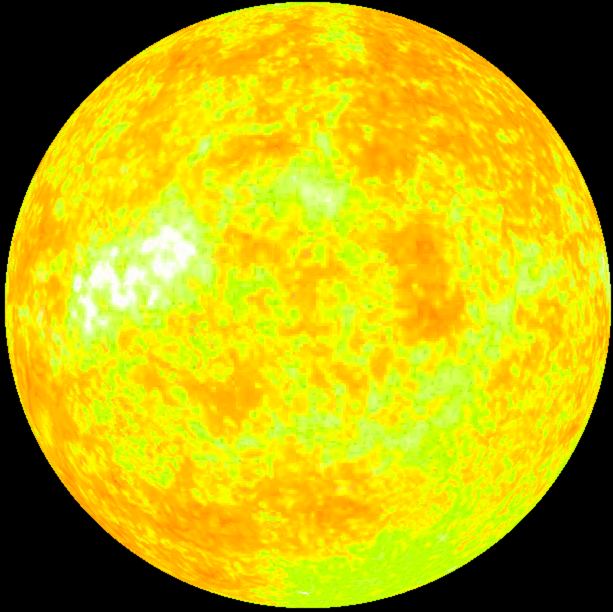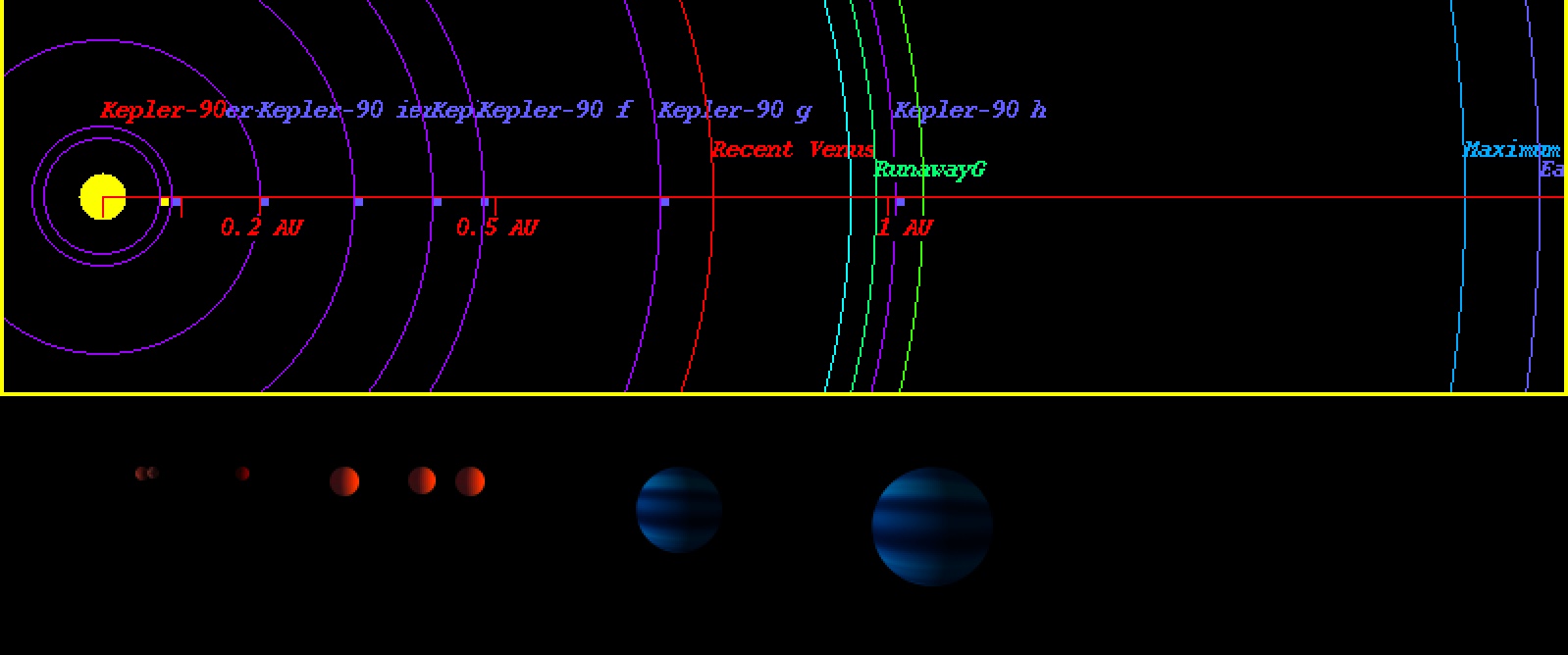
Kepler-90 is a G-type main-sequence star located in the Lyra constellation, about 2545 light years from Earth.
It has a mass and volume are about 1.13 and 1.2 times that of our sun. Our sun has a surface temperature of about 5778 Kelvin and it is around 4.6 billion years old, while Kepler-90 has a surface temperature of about 5930 Kelvin and is an estimated 2 billion years old.
<Fig. 1 Imaginary Image of Kepler-90: Image credit Fuka Takagi & Yosuke A. Yamashiki>
A remarkable discovery found that Kepler-90 also has eight planets in its solar system, the same as our own. This makes Kepler-90 hold the record for most planets orbiting a star that we have discovered yet.
<Fig. 2 Planets Orbiting Kepler-90, Using the ExoKyoto Application>
NASA and Google announced n November 14, 2017, that they discovered Kepler-90i, the eighth planet in the Kepler-90 system. Kepler-90i was discovered by analyzing data from the Kepler Space Telescope using a new machine learning system developed by Google. NASA also discovered Kepler-80g using the same system.
<Fig. 3 Imaginary Image of Kepler-90i Image Credit Ryusuke Kuroki, Yosuke A. Yamashiki>
Kepler-90’s planetary system structure is similar to that of our own solar system. All of the six inner planets are rocky planets, slightly larger than Earth or smaller than Neptune, and the two outer planets are large gas giants. The outermost planet, Kepler-90h, is a Jupiter-sized planet that orbits the host star at the same distance (1.01 AU) as the Earth to the Sun, orbiting the star in about 331 days.
Of course, there are slight differences from our solar system. The outermost planet has an orbital radius roughly equal to that of Earth, and all eight planets are squeezed into a much smaller area than the planets in our solar system. The orbits of the six inner planets are particularly small, for instance, while Mercury has an orbital period of 88 days, Kepler-90i orbits Kepler-90 in just 14.4 days. Consequently, the surface temperature of Kepler-90i can reach 640 Kelvin, and life on the surface is thought to be impossible.
<Movie 1 Kepler-90 and its Planetary Orbits>
It is widely thought that the planets in the Kepler-90 system were once spread out, but for some reason have now moved closer to the host star in their current orbit.
AI produced by Google discovered the new planet by using a neural network of mathematical models, similar to how the human brain works, which identifies a planet’s signal with incredible accuracy. The AI already discovered two exoplanets after analyzing only 670 of the approximately 200,000 celestial objects observed by the Kepler Space Telescope. More exoplanets are expected to be discovered by this method in the near future.
<村嶋慶哉・山敷庸亮>
For more information on Kepler-90i, please visit the ExoKyoto Database:
http://www.exoplanetkyoto.org/exohtml/Kepler-90_iJP.html
For more information about the host star Kepler-90, please visit the ExoKyoto Database:





